


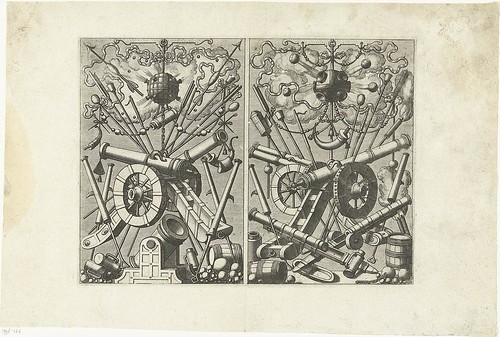
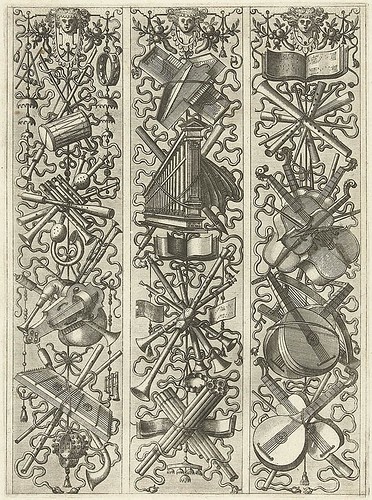


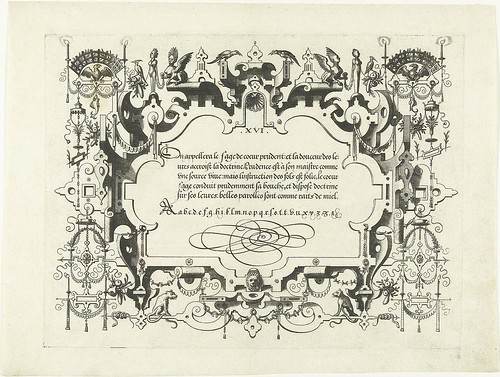



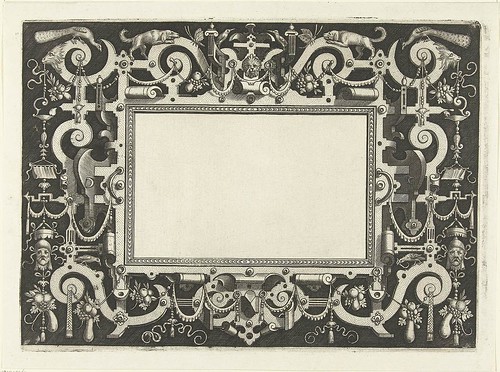
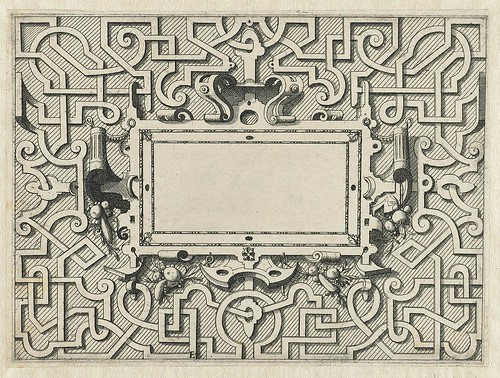


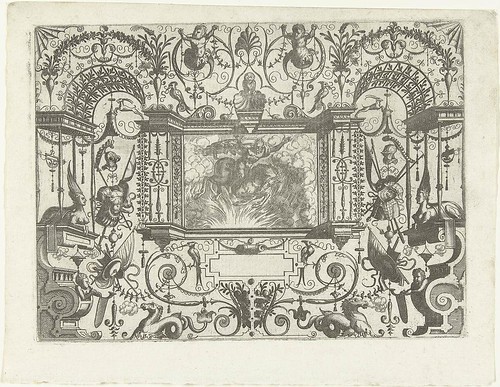
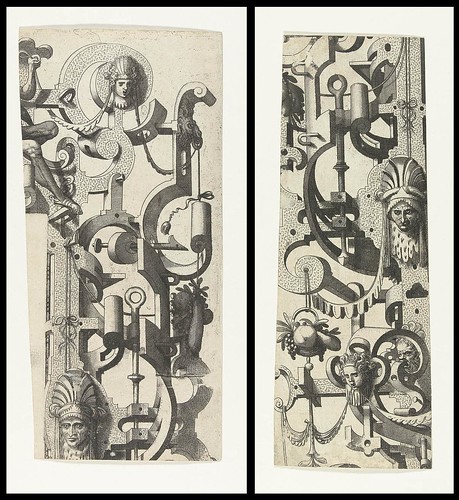
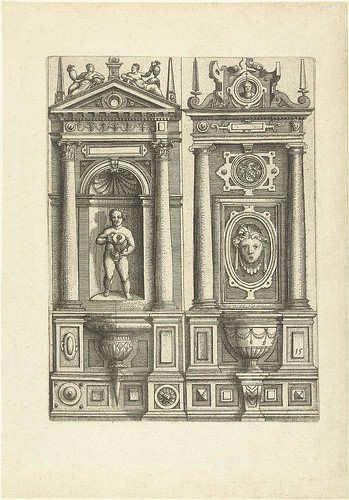
Known in the lowland countries as the 'King of Architects', Hans Vredeman de Vries [aka Johan Frisio] (~1527-~1606) apprenticed in his native Friesland as a painter before travelling widely in the Holy Roman Empire, partly as a result of religious persecution. He was most active in Antwerp, Liège, Wolfenbüttel, Hamburg, Danzig, Prague and The Hague.
De Vries' interest in architecture developed from studying and copying the works of Serlio and Vitruvius, augmented by a commission he received to complete another artist's unfinished painting on perspective. These themes of classical architecture and perspective dominated De Vries' design work, which belongs more in the realm of theoretical rather than practical architecture. He was responsible for the construction of a few modest buildings, a number of triumphal arches for ceremonial entries of royal dignitaries and he worked as a fortification surveyor-architect at one stage; but it was his innovative design sketches that proved to be most influential.
Although de Vries is thought not to have visited Italy, his purely ornamental designs - borrowed from classical antiquity - for vases, furniture, scrolls, grotesques and trophies, constituted an inventory of Renaissance decoration and served as an important conduit for the Italian styles to be disseminated throughout northern Europe. The motifs were cast in the fantasy Mannerist style, as was the custom of the day, and, combined with de Vrie's rich inventiveness - anticipating themes of Baroque decoration - the ornamental designs are particularly notable for straddling, or at least linking, all three major artistic traditions: Renaissance, Mannerist and Baroque styles.
The majority of de Vries' sketches were engraved by other people - Gerard de Jode, Hieronymus Cock, Phillip Galle, Hendrik Hondius - in a variety of cities and printshops, thereby laying the foundation for their widespread copying and circulation. Collections of these prints were intended as instructional models for artists and architects but the motifs could be adapted by goldsmiths, tapestry makers or sculptors. The assembly of images in this post and the previous entry are intentionally skewed towards the decorative studies; but in truth, de Vries' two volume treatise on perspective and his more formal works on orders and details of architecture had the more lasting influence in northern and central European (and even British) architectural circles.
- Rijksmuseum has the largest and best collection of prints after the designs of Hans Vredeman de Vries [if that link doesn't work, try the search page with 'vredeman de vries, hans']
- Frisian Historical and Literary Centre have a couple of collections: 'Perspective' and 'Operum Antiquorum Romanorum'.
- Heidelberg University have three Hans Vredeman de Vries printbook sets (including a different edition of 'Perspective') : click 'tafel' or 'tafeln' and, depending on the site format, either click the '-' at the top of the page or 'vorschau', to obtain the thumbnail pages)
- Biographical material: one, two, three, four, (w) et en Français.
- Additional image source: Ornamental Prints Online.
- Note: see Part One - The Architecture of Fantasy I. [via and thanks Karla!]
- There are a few books on Hans Vredeman de Vries at Amazon
- All the images above were background/spot cleaned to one extent or another.



























































6 comments :
Ayiyi, the horror vacui is upon us! I could see from the reproductions in Artstor that he liked to get in plenty of decoration, but these go way beyond what I found there. Those first few of the military regalia give me the sensation that everything is exploding and flinging shrapnel (although sort of like the Rods cards in some Tarot decks). Maybe we could have some more of those relatively peaceful tomb effigies?
Then again, maybe it will all calm down for me after I digest my mysteriously delayed non-breakfast.
Wonderfully excessive stuff: many thanks for posting it.
I have [Fontium Puteorumque Iconicae Delineations] by Vredeman de Vries,
Also [Architectura] by Dietterlin.
Both are very imaginative and images in following page.
http://www.eurus.dti.ne.jp/~kn1/pages/ImaginaryDesign.htm
It is Japanese site.
Thanks ken_n_arch. Nice blog you have there too!
does anyone know what the inscription on the 6th one from the top says?
That's a good question Curran and I *think* I have an answer..
The verse is from the Bible: Proverbs 13 [see here] beginning with the words Egestas et ignominia (I deduce this from some of the notes at the Rijksmuseum)
So it translates as...
"Poverty and shame to him that refuses instruction: but he that yields to reproof shall be glorified. The desire that is accomplished, delights the soul: fools hate them that flee from evil things. He that walks with the wise, shall be wise: a friend of fools shall become like to them."
Post a Comment
Comments are all moderated so don't waste your time spamming: they will never show up.
If you include ANY links that aren't pertinent to the blog post or discussion they will be deleted and a rash will break out in your underwear.
Also: please play the ball and not the person.
Note: only a member of this blog may post a comment.